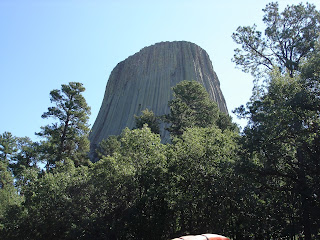At the hundredth meridian,
Where the great plains begin .....
The Tragically Hip
Two words make the magic begin : "Road Trip!" There is something liberating about getting into a car loaded with music, maps, books, food and drink, and as much clothing as you can pack into daypacks and overnight bags. Have a general plan, fill the tank with gas, make sure you have your documents ready and get up early and just drive, baby.
We decided that we wanted to head west, to Winnipeg and see some good friends we haven't seen in years. Great idea, but not enough. We started looking at a map and a calendar and began to compile a wish list of places within a thousand kilometers of Winnipeg and drew lines on the highways that connected them together. Before we knew it, we had a trip ready and waiting for us.
There is something also mystical about the Great Plains. Something alien to us in our world of cities, factories, small farms and trees. A vision of a limitless sky and land that goes on into the imagination for as far as you can dream. A place where history and geography merge into one giant story.The Hip wrote a strange song about the "hundredth meridian" and it became a mantra. We had to go and see what it is like.
My little Suzuki Aerio, christened by my brother as the "Millenium Falcon", is going to have one last serious test on the long highway. She's done the trip before, and other ones too, but that was when she was new and seemed to unleash herself on the open road. Now, she's old, with several new parts to her, and many, many dents, chips and strange sounds. Can she do it?
More importantly, can we do it? Road trips are nothing new. We love them. But recent trips have been a bit of a strain on us physically ( nothing over 8 hours in the car ! ) and a strain on our ability to work together. No matter, we now have firmly joined the latter part of the 20th century and bought a GPS, so that, when we do get lost, we can blame an impersonal machine with a ridiculous female voice instead of each other. And we know the route, or at least the opening part of it, and can face a couple of very long days ( perhaps 12 hours each day, in order to get to Winnipeg in 2 days instead of the normal 3) when we know what's coming up and really, really put our minds to it.
So, bring it on !! To the Hundredth Meridian, where the Great Plains begin. To the wild west, the land of tragedy and heartbreak and opportunity and the future. The land of strange and wonderful scenery and new, unknown places. Here we go !!!
 |
| The Millenium Falcon in the Badlands of South Dakota |





















































